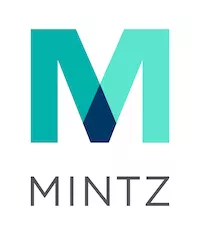Clinical laboratories and hospitals should note the potential changes to the Protecting Access to Medicare Act of 2014 ("PAMA") reporting requirements tucked into the 1,400 page Physician Fee Schedule Proposed Rule (the "Proposed Rule") released by CMS earlier this month. If finalized, these proposals would likely expand the number of laboratories, including hospital laboratories, subject to PAMA's reporting requirements and may ultimately impact the rates paid under the Medicare Clinical Laboratory Fee Schedule ("MCLFS").
As discussed in a previous post, PAMA made sweeping changes to the rate-setting process under the MCLFS. PAMA and its implementing regulations require "applicable laboratories" to report the private payor rates they receive for laboratory tests during specific data collection periods, and those rates then determine the rates paid under the MCLFS.>
Applicable Laboratory: A Problem of Definition
Since the final rule implementing PAMA was promulgated in 2016, the laboratory industry has expressed concern about the definition of an "applicable laboratory" and whether the limited scope of laboratories subject to reporting requirements unduly skews the MCLFS rates. An applicable laboratory is an entity that:
- Is a laboratory (as defined under CLIA);
- bills Medicare Part B under its own National Provider Identifier ("NPI");
- receives more than 50% of its Medicare revenues under either the MCLFS or the Medicare Physician Fee Schedule ("MPFS"); and
- in a six-month data collection period, receives at least $12,500 in revenue from the MCLFS [this prong of the definition is not applicable to reporting for advanced laboratory diagnostic tests.]
In particular, defining an "applicable laboratory" by reference to an NPI has drastically limited the number of hospital laboratories reporting their private payor rates because nearly all hospital laboratories bill Medicare under the hospital's NPI (rather than a separate, laboratory-specific NPI). In the first reporting period, only 1,924 NPI-level entities reported (approximately 0.7% of the NPI-level entities that bill Medicare for laboratory services). Of those, only 21 were hospital laboratories. Because, on average, hospital laboratories receive higher private payor reimbursement rates than independent laboratories, this definitional problem likely contributed to the vast decreases in the MCLFS rates implemented in 2018. The American Clinical Laboratory Association ("ACLA") has filed a lawsuit against CMS challenging the definition of an applicable laboratory, and it has continued to put pressure on CMS and Congress to address the issue. ACLA's website includes comprehensive coverage of the issues surrounding PAMA.
The Proposed Changes
The Proposed Rule includes one proposed change to the definition of an applicable laboratory and solicits comments on other changes that would impact which entities qualify as such.
The proposed change would eliminate Medicare Part C revenue from inclusion in the laboratory's total revenue for purposes of determining if a laboratory is an applicable laboratory. Currently, a laboratory must determine if the majority (more than 50%) of its total revenue from the Medicare program comes from either the MCLFS or the MCPFS. The denominator in that calculation includes revenue from Medicare Part C. The proposed rule would remove Part C revenue from that denominator, potentially making more laboratories subject to reporting.
The Proposed Rule also invites comments on the following matters related to the definition of an applicable laboratory:
- Revising the Low Expenditure Threshold – Currently, a laboratory must report private payor data only if it exceeds the "low expenditure threshold" for Medicare revenue, currently set at $12,500 during a six-month data collection period. The Proposed Rule seeks comments on whether CMS should decrease the threshold by 50% to $6,250—making more laboratories and potentially more physician office laboratories subject to reporting—or double the threshold to $25,000—making fewer laboratories subject to reporting.
- Increasing Reporting by Hospital Laboratories – CMS also seeks comments on defining an applicable laboratory by reference to revenues identified on the Form CMS-1450 14x bill type, which is used only for outreach (i.e., nonpatient) services, rather than by reference to the revenues associated with the NPI. CMS noted that this proposal would prevent a hospital from having to seek a separate NPI for the laboratory, but that it may not be workable because some private payors, including MA plans, do not require use of the 14x bill type.
- Defining Applicable Laboratories Based on CLIA Number – Industry stakeholders, including ACLA, have pushed for CMS to revise the definition of an applicable laboratory to be based on a laboratory's CLIA number, rather than its NPI. Under this approach, each CLIA-certified laboratory would determine if it meets the majority of Medicare revenue test and the low expenditure threshold.
Though CMS is inviting comment on these issues, the overall tone of the Proposed Rule suggests that changes in response to comments would be unlikely. CMS notes that it is "confident that [its] current policy support [its] collecting sufficient applicable information in the next data reporting period, and that [it] received sufficient an reliable applicable information" for the 2018 MCLFS rate-setting.
Comments on the Proposed Rule are due by September 10, 2018. We will continue to monitor this rulemaking and the ACLA litigation around the definition of an applicable laboratory.
The content of this article is intended to provide a general guide to the subject matter. Specialist advice should be sought about your specific circumstances.



